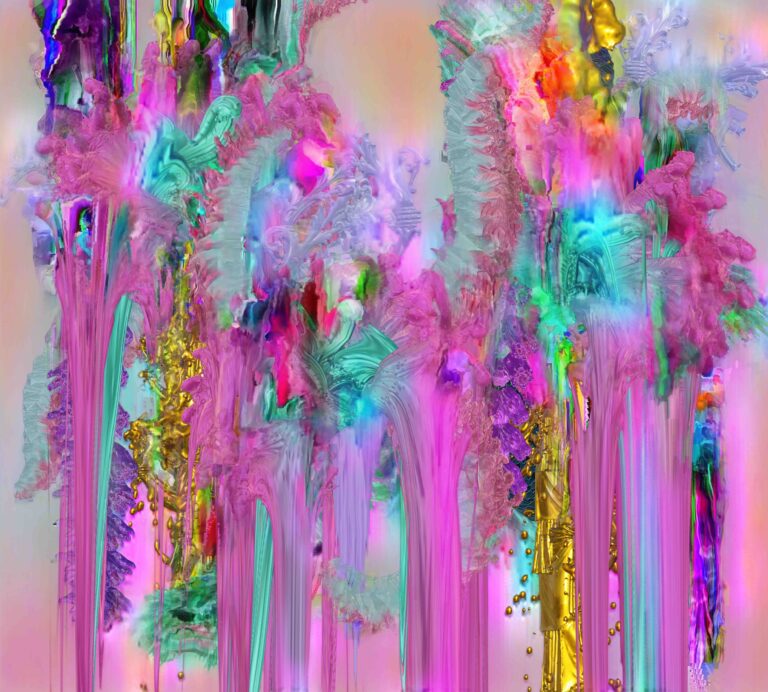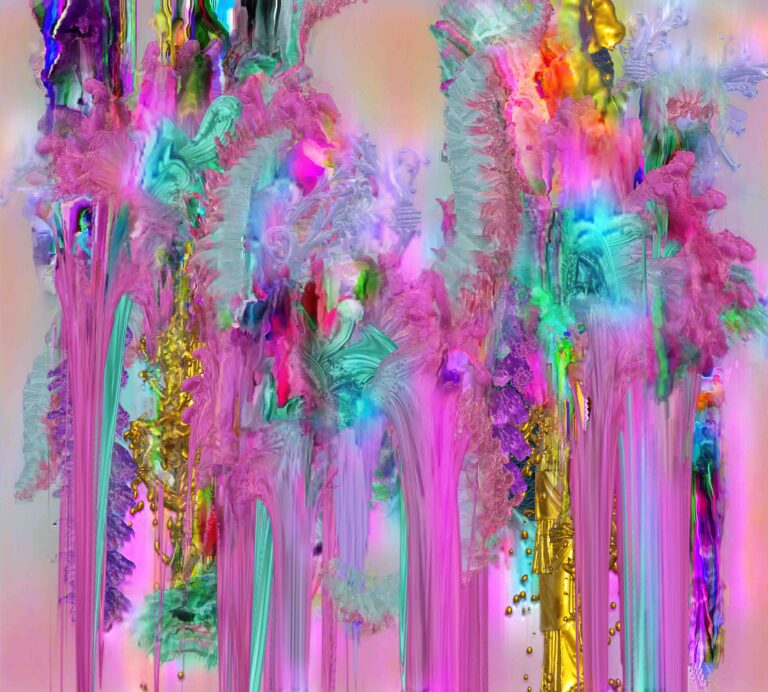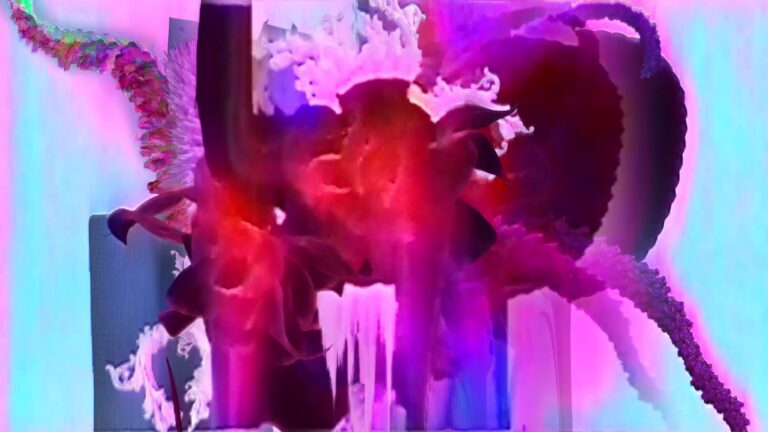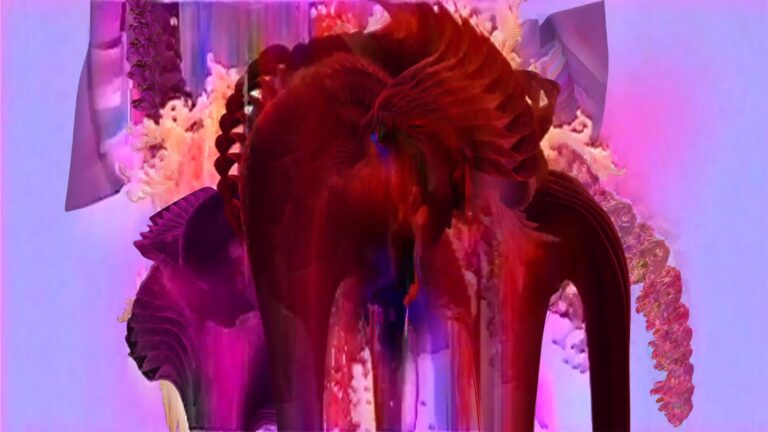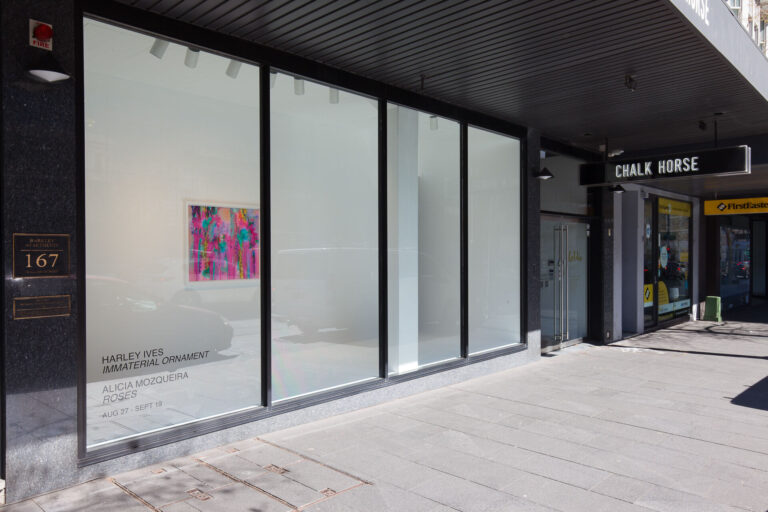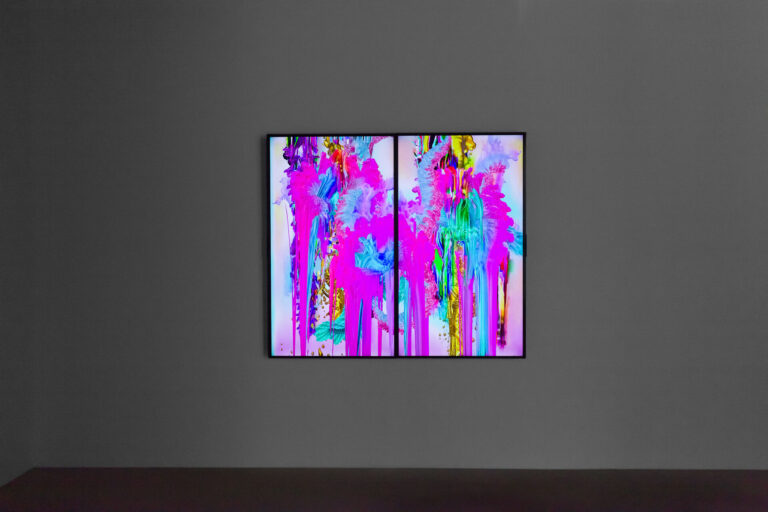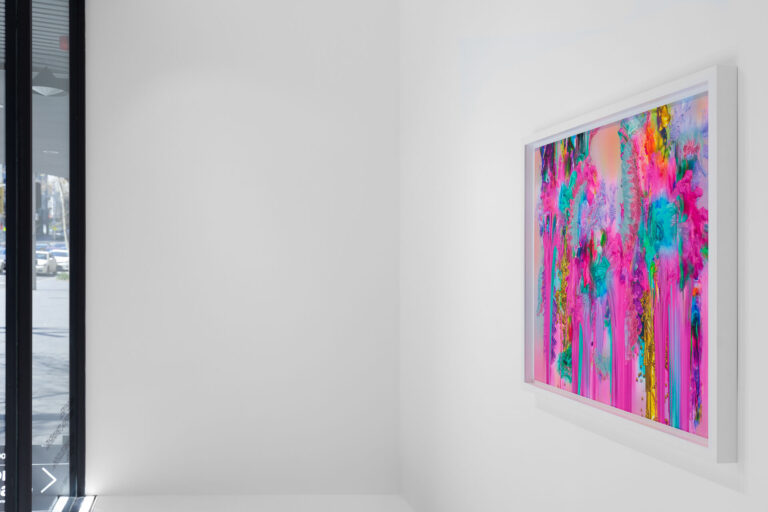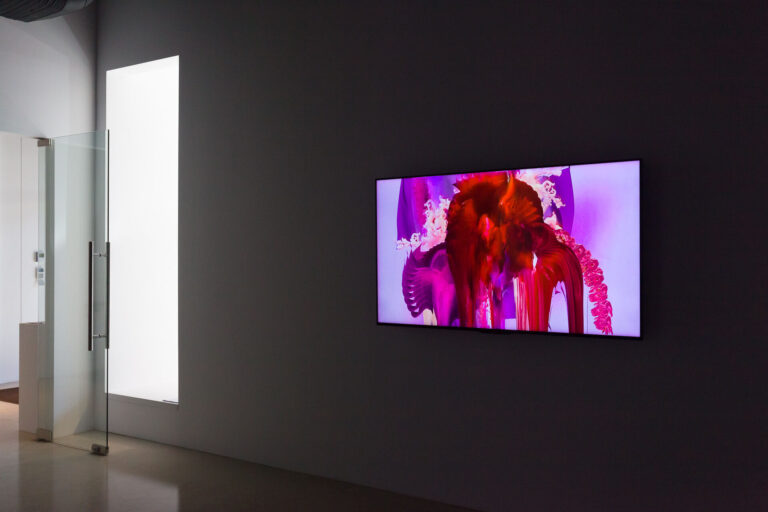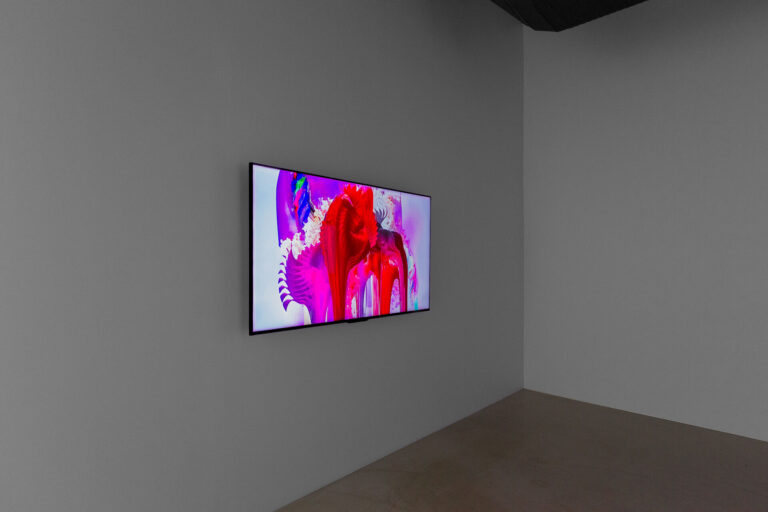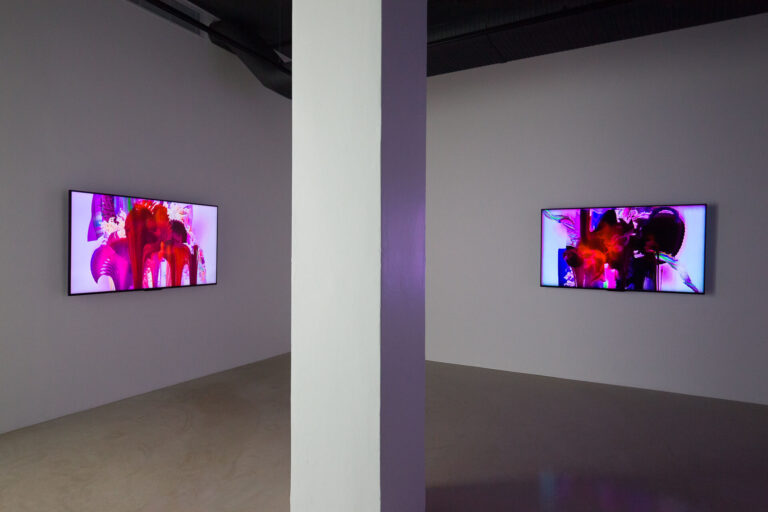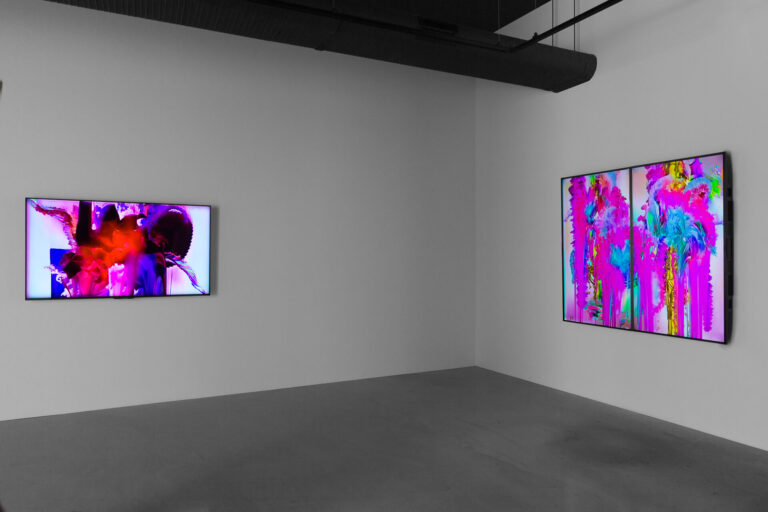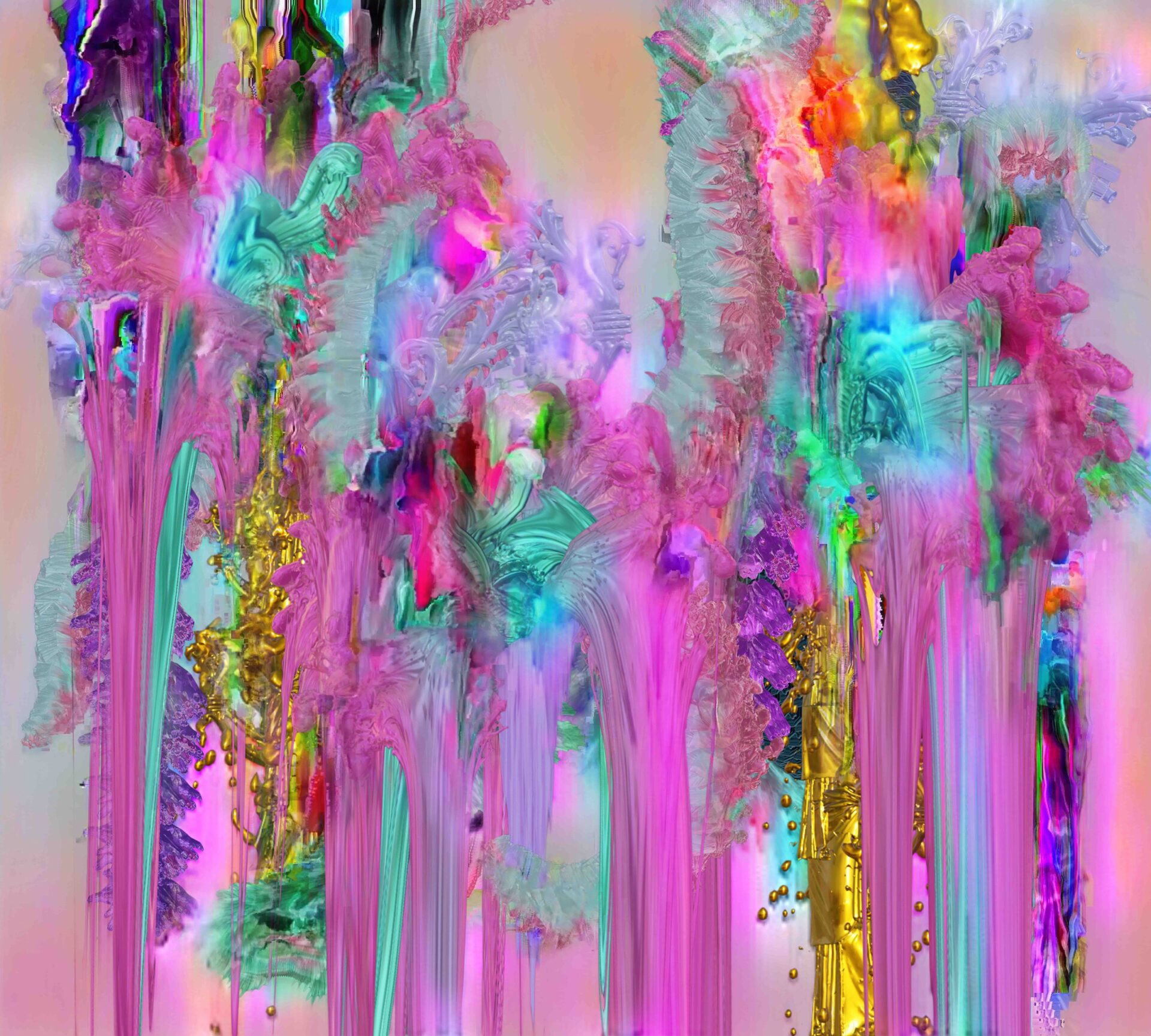
Artworks
Installations
As viewers we encounter this work at a time when many of our lives are more mediated by digital technologies than ever before. Much of our communication depends on these technologies as we spend more time in our domestic spaces. We’ve become familiar with the paradoxical experience of intimacy that is the Zoom call – missing the bodily presence and touch of our friends while seeing inside the homes of our colleagues; catching glimpses of housemates, family members, pets and interior design choices that we otherwise would not be privy to. It is in this strange scenario that Harley Ives offers us Immaterial Ornament, a series of works drawing from Western traditions of still-life painting and flower arrangement.
A concept found in the former is that of the impossible bouquet. Emerging from 17th century Dutch still-life painting, an impossible bouquet depicts an arrangement of flowers that could not exist as each specimen blooms in a different season and in geographic locations vast distances apart. Such bouquets are today commonplace, made possible through the global floral industry. Lest we think the impossible bouquet was killed by global capitalism and trade (and artificial flowers), Ives continues the legacy through his depiction of flowers that do not wilt over days and weeks. They do not end up discarded in a bin in a house they were bought to adorn, nor disintegrate into the earth above a grave they offered company to.
Decay and degeneration, however, are very much present in these works. As material flowers drop petals and curl, Ives’ flowers shed data and discolour. A bought bouquet will often be rendered scentless through its transportation across the world in a series of refrigerated vessels. The flowers in these works also experience transit, moving between digital and analogue modalities, a process that imparts an oversaturated glitchy aesthetic specific to the technologies used. Movement is also introduced to these compositions, resulting in objects that melt, drip, crumble, pour and rotate, performing for the viewer’s pleasure. Indeed the turning speaks to the origin of the forms present in the work, sourced from websites trading in digital 3D models. This is a marketplace designed for a variety of industries, including commercial and advertising firms and real estate agents purchasing furniture to decorate online images of houses for sale. A bleeding, again, of the digital and domestic.
These compositions are created through a complex process that involves animation, intervention, transfer, recording, rerecording, rerecording (…), transfer and layering – steps that fold together controllable and uncontrollable elements. This meticulousness mirrors the 1950s and 60s flower arrangement books collected by Ives. Books created with middle-class housewives in mind, providing instruction on how to beautify their homes. There are different ways to perceive these books: with appreciation for their kitsch appeal; as guides and inspiration for expressing creativity; as manuals for decorating the cage that was the home for so many women. Perspectives on the value of the ornamental are held in this work alongside the layered symbolism of arranged of flowers.
An example is how these moving still-lifes call to mind the use of flowers as a memento mori – a reminder of the inevitability of death. Perhaps intuiting that contemporary viewers do not need another opportunity to reflect on the fragility of life, Ives plays with this concept by designing these pieces to run as seamless loops, ad infinitum. How does this element of time and the suggestion of forever dance on screen with forms that symbolise the briefness of material existence? What possibilities may the digital and immaterial offer and what beauty can be seen in the decay?
Alex Moulis, 2020

